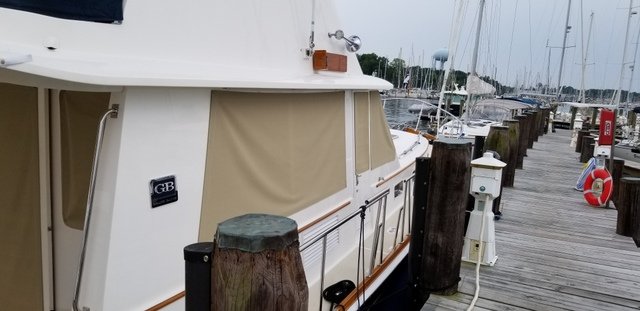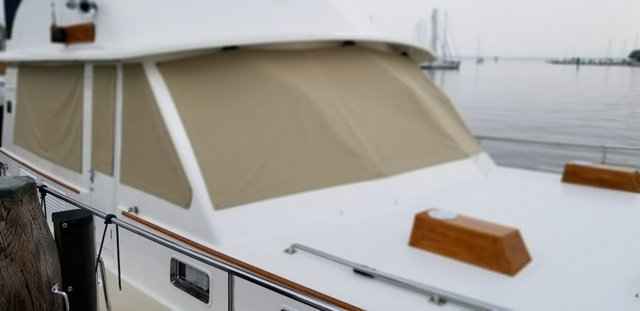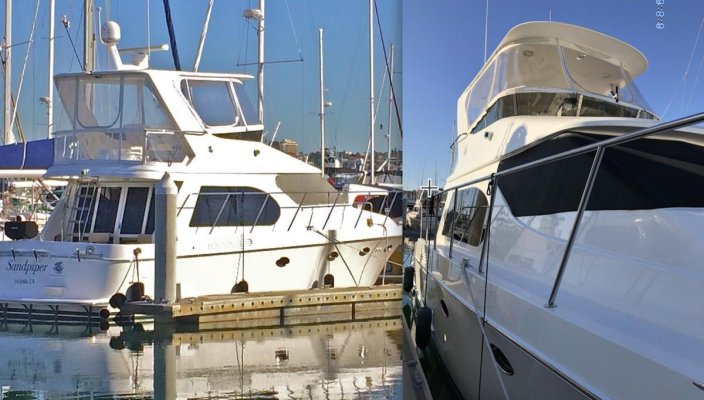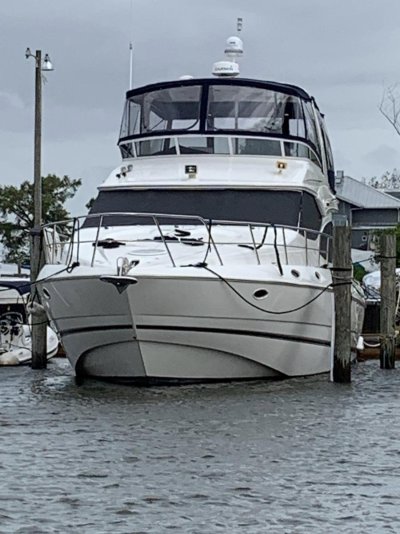White reflects heat, black (or any non-white color) absorbs heat.
The same principle applies to hull color. White hulls are cooler in sun than colored hulls. White hulls do not absorb heat like colored hulls do.
You asked about color, and also about staining. You might also consider the issue of privacy if you are having these made for ALL of your windows.
We have white screening covering our cockpit. When exposed to direct afternoon Florida sun, the white screening reduces the temperature in the cockpit by around 5-7 degrees.
When we are at a marina, folks walking by on the dock do not see us in the cockpit during daylight hours. However, our vision looking outward through the white screen is what I would describe as somewhat impaired, because the outside view is opaque.
Black screens are easier to see through and see into during the day, and a person's vision looking outward through the screen is not nearly as impaired. This is why most porch screens for houses are black screens - vision looking outward through black screening is minimally reduced.
At night, if there is more light inside the boat than outside, either color will allow people on the dock looking into your boat to somewhat see the forms and figures inside.
Sailrite did a good day/night privacy video with the Phifertex black screens:
Cheers,
Mrs. Trombley






